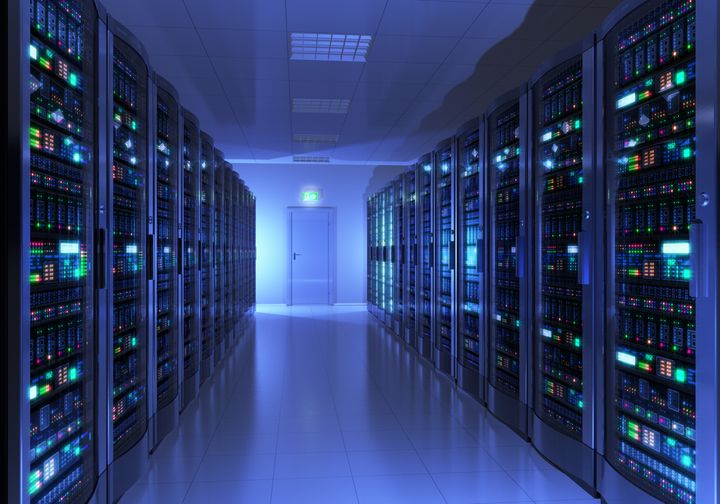
In a thoughtful series of articles in The New York Times, reporter James Glanz has re-ignited a discussion about the extent to which the rapid growth in all things digital is creating a massive energy hog that bears watching. There have been so many rebuttals to these articles that a summary of all the accusations, counter-points and the general fallout was published in GreenBiz.com.
While there is not much more that can be said in the point-counterpoint sparked by these articles, we should thank Mr. Glanz for bringing additional attention to this issue. Just about any process or service you can think of is being digitized and moved to "the cloud." This has created a tectonic shift in our way of life and it is absolutely appropriate to examine the impacts from all angles, including environmental impact. Here is one more...
One More Angle
I got the impression from The New York Times articles that most of traffic though data centers is for frivolous uses like social media updates, old forgotten photos, or storing old email. When coupled with the seemingly massive use of energy needed to power data centers, the implication is that the ongoing digitization of our lives is both very wasteful and damaging to the environment.
Let's stipulate that, like breathing or ocean tides, we cannot and should not stop the trend toward a digital society. Let's also stipulate that it is absolute folly to attempt to regulate what people can and cannot do on the Internet in the name of energy efficiency.
If these stipulations seem like common sense to you, as they do to me, then what are we left with? The answer is Dr. Jon Koomey's widely accepted estimate that less than 2 percent of all electricity generated in the U.S. is consumed by data centers.
Brown Clouds and Green Clouds
While less than two percent may seem quite small in comparison to the obvious benefits of the digital age, this is no excuse for wasting power. Mr. Glanz's articles focused on some examples that seem very wasteful and, based on our experience can be corrected. AMD operates its own cloud data center infrastructure with a utilization rate approaching 90 percent which is a stark contrast to the image of 90 percent of data center equipment sitting idle reported by Mr. Glanz. Even the Natural Resources Defense Council (NRDC), in their response to these articles noted the distinction between wasteful and well managed data centers:
"...not all clouds are created equal; there are "green" clouds and "brown" clouds. Those that carry out energy-efficiency best practices and use low-carbon energy sources are far more sustainable than typical server rooms."
"If done right, by using cleaner power sources and significantly reducing energy waste, cloud data centers and server rooms can be part of the solution. They can transform the way we live and work to be more sustainable while saving billions of dollars in electricity costs a year."
Incentives to Save not Waste
In reality, energy costs and environmental protection are dominant concerns in the data center industry. For example, the operational cost of a server - which is almost entirely electricity - often exceeds its capital cost over its useful life. In addition to the power used by servers and IT equipment, the electricity demand from non-IT equipment in the data center, such as cooling systems, power delivery systems and lighting, can be substantial -- averaging 80 percent of the power used to run the IT equipment.
With such obvious price signals, the industry is economically motivated to reduce the power consumed by data centers. This has spawned solutions both competitive and collaborative. The Green Grid, a group that AMD helped found several years ago, has been a leader in bringing together companies in the data center value chain to develop open source standards, best practices and tools to advance data center energy efficiency.
While we support these collaborative efforts, AMD also has delivered an impressive array of energy efficient innovations to address today's data center workloads. One example is the AMD SeaMicro SM15000™ server. Micro servers deliver massive efficiencies in power, space and bandwidth, and The SeaMicro SM15000-XE server is the highest-density, most energy-efficient system available, using half the power, one-third the space and delivering up to 12 times the bandwidth of today's best-in-class server.5 With its innovative technology and small form factor, the SeaMicro server not only reduces the power used to process data, it also reduces the power needed to run the whole data center.
The AMD SeaMicro server represents the cutting edge in energy efficient micro-servers, but the overarching point is that every company in the data center business has a natural incentive to reduce power consumption to save money.
A Cleaner Future
All the energy efficiency innovations in the world may not be able to keep up with the overall growth in the number of data centers. But what if we were able to go digital without using any fossil fuel? That is the premise of a new research project conducted jointly by AMD, HP, NYSERDA (a New York State Utility) and Clarkson University. This coalition is testing the idea of locating modular containerized data centers (or PODs) near sources of alternative energy such as solar and wind power. To keep the bits and bytes flowing when the sun is not shining or the wind is not blowing, these PODs will be networked together with fiber optic cable so that the workload can be transferred to the PODs with power.
Dubbed the "evergreen cloud," this research holds the promise of growing our digital society without adding environmental burden.
Part of the Solution
We can argue forever whether updating our Facebook page or posting a tweet constitutes a valuable use of IT equipment. Lost in this debate however are the beneficial uses of IT. AMD has published a series of case studies demonstrating how semiconductor technology is used for everything from medical research, to education, to forecasting the effects of climate change and more. For example, NPR ran a recent story on the benefits of the cloud to the health care industry that stated:
"The cloud's vast computing power is making it easier and less expensive for companies and clinicians to discover new drugs and medical treatments. Analyzing data that used to take years and tens of millions of dollars can now be done for a fraction of that amount."
But these obvious IT benefits are not the end of the story:
In 2008, The Climate Group on behalf of the Global e-Sustainability Initiative (GeSI), with independent analysis by McKinsey & Company published the SMART 2020 study which found that:
"ICT is a key sector in the fight against climate change and could enable emissions reductions of 7.8 Gt CO2e (gigatons of carbon dioxide equivalent emissions) in 2020, or 15% of business as usual emissions."
In other words, the advent of equipment ranging from smart energy meters, smart motors, smart buildings, smart grids and other IT enabled systems is essential to addressing the looming threat of climate change. According to the study:
"...despite its own growing carbon footprint. No other sector can supply technology capabilities so integral to energy efficiency across such a range of other sectors or industries.
"While the sector plans to significantly step up the energy efficiency of its products and services, ICT's largest influence will be by enabling energy efficiencies in other sectors, an opportunity that could deliver carbon savings five times larger than the total emissions from the entire ICT sector in 2020." (Emphasis added)
What if everyone was like the IT industry?
Green Grid board member Kathrin Winkler of EMC wrote in her rebuttal to The New York Times articles, "If the auto industry had gotten efficient as quickly as the IT industry in the last 40 years, we'd be getting 450,000 miles to the gallon."
This stunning statistic raises an important question: If data centers account for about two percent of the U.S. electricity consumption and have achieved huge efficiency gains, what are the consumers of the other 98 percent doing to improve energy efficiency?
The IT industry is economically motivated to produce energy efficient products and is making steady progress with both new technology and operating practices. While these innovations reduce energy usage, the bigger story is the benefits that are produced by the use of IT equipment.
Yes, IT products are used to tweet our lunch selections... but data centers also power lifesaving research. And on top of all that, IT equipment enables our entire society to be more efficient at a rate five times larger than the power it consumes.
Imagine if we could squeeze that kind of performance out of the other 98 percent.
Tim Mohin is Director of Corporate Responsibility for Advanced Micro Devices (AMD) and the author of the book, Changing Business from the Inside Out: A Treehugger's Guide to Working in Corporations (Greenleaf and Berrett-Kohler). His postings and comments made in his book are his own opinions and may not represent AMD's positions, strategies or opinions. Links to third party sites, and references to third party trademarks, are provided for convenience and illustrative purposes only. Unless explicitly stated, AMD is not responsible for the contents of such links, and no third party endorsement of AMD or any of its products is implied. Follow Tim @TimMohinAMD and check out AMD's latest Corporate Responsibility Report - the summary is available as a tablet app.
